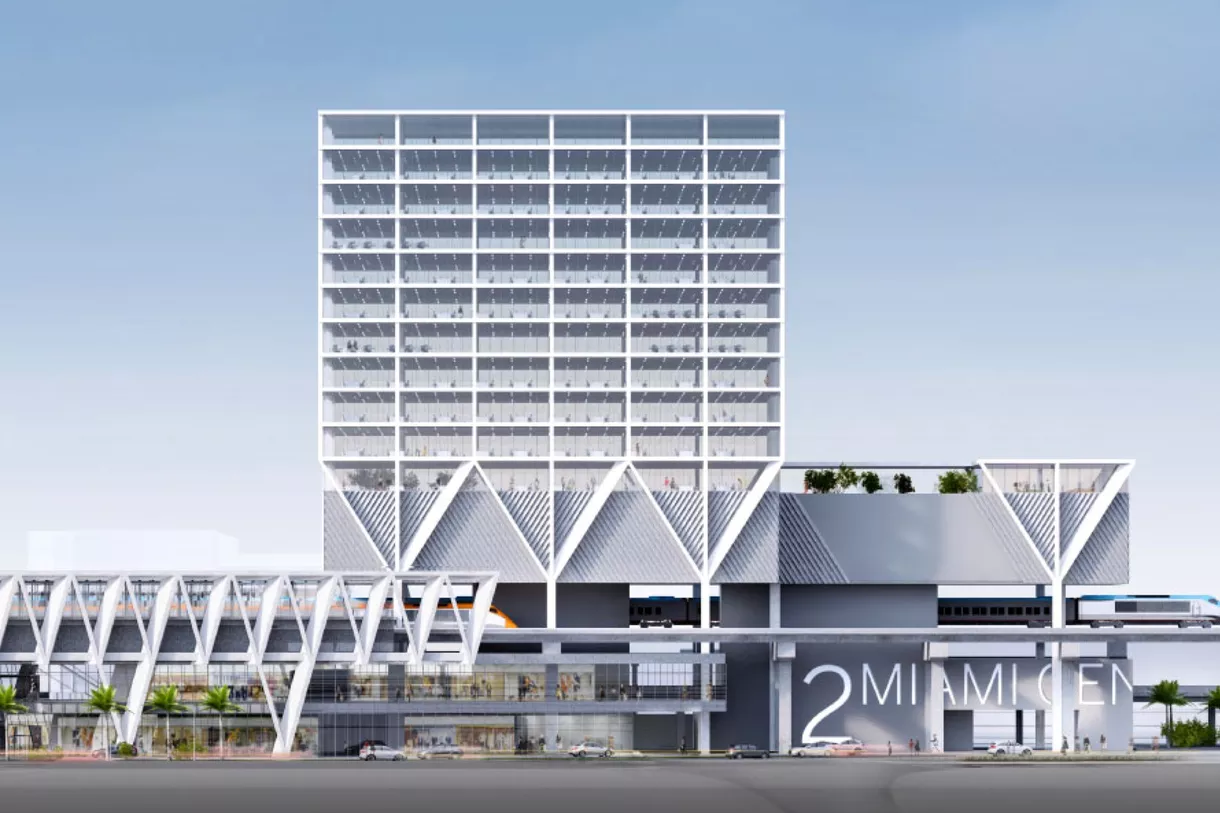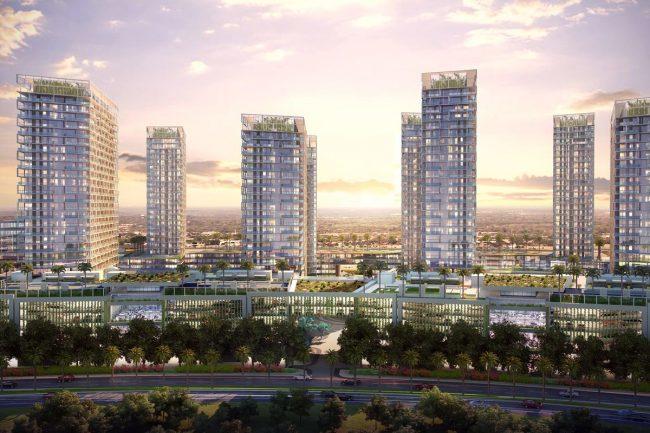Trending
South Florida is coming off its EB-5 addiction
Developers now less reliant on cash-for-visa program to fill capital stack

A program that was once described as the “crack cocaine of real estate financing” no longer seems to hold the same addiction for South Florida’s developers.
In 2014 and 2015, Rodrigo Azpurua’s Riviera Point Development Group financed two projects entirely with capital raised from the EB-5 program, which gives foreign investors a green card in exchange for investing in job-creating U.S. projects.
At the time, Azpurua described such investors as “happy campers.” Non-Chinese citizens could get a visa through the program in a matter of months, and that made them a great target for developers looking for money at far lower rates than traditional lenders would offer.
But things are different now. Today, Azpurua will target EB-5 funds for just a third of his project’s total cost, and is looking to slash that reliance even further for future projects. Other developers in South Florida, too, are looking elsewhere, saying that there are more financing options available.

Charles Penan
“Two years ago it was one of the most widely talked about equity sources,” said Charles Penan of Miami-based debt brokerage Aztec Group. “Now, not so much.”
Highlighting this decrease, Invest in the U.S.A, a prominent industry trade group for EB-5 regional centers, reported that direct foreign investment in EB-5 fell nationally to $3.81 billion in 2016, a 13 percent year-over-year drop from $4.37 billion in 2015.
Adding to these concerns for developers and investors is how Congress will treat the program in the long-term, and whether new rules related to minimum-investment thresholds and quotas will hinder its success.
Some contend, however, that as long as EB-5 keeps getting extended, it’ll remain an important part of a developer’s financing toolkit.
Developers are generally interested in using EB-5 so that they can finance the gaps in a project’s capital stack, which is the portion between the senior debt and its equity, according to Daniel Shiff, a managing director of EB5 Capital, which owns and operates five EB-5 regional centers across the country. As the size and total costs of projects rise, so could these financing gaps.
“As long as legislation can be enacted to preserve the program … there is every reason to believe EB5 will continue to be a very viable part of every developer’s capital stack,” said Julian Montero, an attorney at Saul Ewing Arnstein and Lehr in Miami.
South Florida’s EB-5 history
Founded under the Immigration Act of 1990, EB-5 provides foreign entrepreneurs lawful permanent residence in the U.S. in exchange for creating jobs and investing in the community. However, it only started attracting the attention of developers after the Financial Crisis in 2009. At the time, traditional banks were reluctant to lend to developers due to heightened scrutiny from regulators.
“In 2008 or 2009, developers could not find other accesses to capital,” said Stephen Yale-Loehr, a professor of immigration law at Cornell University who has testified before Congress about the EB-5 program.
As a result, developers turned to EB-5 for financing, which offered lower rates than traditional mezzanine financing.
“It’s money at a very low cost, and it’s money that takes a junior position in the construction loan,” said Joseph Kavana, the developer of Metropica, a $1.5 billion, 62-acre mixed-use community adjacent to Sawgrass Mills Mall. Kavana said he plans to use EB-5 money only to pay down an existing construction loan on the project.
Under the program’s current guidelines, foreign investors are eligible to apply for a green card if they invest at least $1 million – or $500,000 in a high-unemployment area or rural area –
in an enterprise and create at least 10 jobs.
For Chinese investors, who are the vast majority of EB-5 investors in real-estate projects, it provided a chance to gain a visa in just about two years, which was much less than what other visa programs would take.
Numbers detailing EB-5 investment are hard to come by, but based on the most recent data from the trade organization, Invest in the U.S.A, the program took off in Florida between 2011 and 2013.
In Florida, EB-5 investment increased from $10.5 million in 2011 to $150.5 million in 2013. The group projects that the total gross domestic impact from EB-5 was $179 million in 2013, supporting 2,755 jobs.
This included not only some of South Florida’s biggest projects such as the Panorama Tower, but also local restaurants, bars and hotel. Tapco Restaurant Group’s Tap 42 Craft Kitchen & Bar used EB-5 funding to finance a majority of its four locations.
Second thoughts
Aztec Group’s Penan said that today, however, none of the developers he’s worked with in Florida are using EB-5 for financing or are looking to use EB-5.
“It’s really (due to) the uncertainty of the program,” said Penan. “You don’t want to put all this time and money in (to a project) and then not get the money.”
“It is creating jobs without taxpayer money and it is a great program to stimulate the economy,” Azpurua said.
There is also waning interest from Chinese investors due to a growing backlog of visa seekers, which is adding significantly to the waiting period for a green card. The U.S. government only issues about 10,000 new EB-5 visas per year, well below the demand for the program from Chinese investors.
“They don’t want to wait over a decade to get EB-5 Green card,” Yale-Loehr said of Chinese investors.
Chinese investors have instead been turning to private equity to invest in U.S. real estate projects, according to Ronald Fieldstone a partner at Saul Ewing Arnstein & Lehr.
“Many EB-5 funding sources, especially including migration agents in China, have established equity funds that are seeking to raise capital to invest in US real estate” Fieldstone wrote in a blog post for legal blog JD Supra.
Chinese interest could be boosted by the introduction of a direct flight between Miami and Asia, according to Abteen Vaziri, a director in Greystone’s EB-5 group, a private real estate lending firm that specializes in underwriting EB-5 projects.
“Once that direct flight starts we (South Florida) will see a huge increase (of EB-5 investment),” said Vaziri.
Vaziri also said once larger Chinese projects come to South Florida, it will catch the attention of more Chinese investors, who may not be familiar with the area. He added that when Hong Kong-based developer Swire Properties’ built the $1 billion Brickell CityCentre, it served as a catalyst for more Chinese investment in the region.
In addition to the political uncertainty of EB-5, the program has also been the victim of fraud and abuse.
One of these alleged cases involved a condo hotel in Palm Beach known as the Palm House Hotel that solicited EB-5 funds from Chinese and Iranian investors. The U.S. Department of Justice alleges that about 60 investors were defrauded out of a total of $50 million. The project was never finished and instead prosecutors allege went to fund another condo project that the developer of the project owned, according to prosecutors.
According to the lawsuit, the defendants falsely claimed that famous celebrities and politicians such as Bill Clinton, Donald Trump and Celine Dion would serve on the Palm House’s advisory board. Both defendants, the developer, Robert Matthews and real estate attorney Leslie Robert Evans pleaded not guilty to wire fraud and bank fraud charges.
“All EB-5 investors need to be careful about what project they are investing in and the negative publicity makes it more difficult to find EB-5 investors,” said Yale-Loehr.
There have been, however, a few recent success stories with EB-5 in South Florida. Hollywood Circle, a mixed use project in Hollywood, Florida, raised $109 million in EB-5 funds, mostly from Chinese investors, where EB-5 funds accounted for nearly half of the project’s total costs.

Last year, Brightline’s parent company Florida East Coast Industries closed on $130 million in EB-5 financing for its mixed-use MiamiCentral station in downtown Miami, property records show. The station, which will span 180,000 square feet, connects the privately funded high-speed train to Miami from Fort Lauderdale and West Palm Beach.
LatAm demand grows
Latin American investors are quickly emerging as the next target for developers.
The U.S. saw 282 Brazilian immigrants come through the EB-5 program last year, and the country rose to become the third-largest user of EB-5 visas, a recent report from the U.S. Department of State shows.
In Brazil, new visas increased 88 percent increase on a year-over-year basis. In 2015, just 34 EB-5 visas were issued to Brazilians.
“The rise of Brazil is due to the fact that developers are spending more time and resources trying to raise money in Brazil,” said Saul Ewing Arnstein’s Montero. “It takes some time to be digested by people in the market.”
“In China, people were very familiar with the process,” Kavana said. “In Latin America, it is a new thing … it is our duty to explain it to them.”





